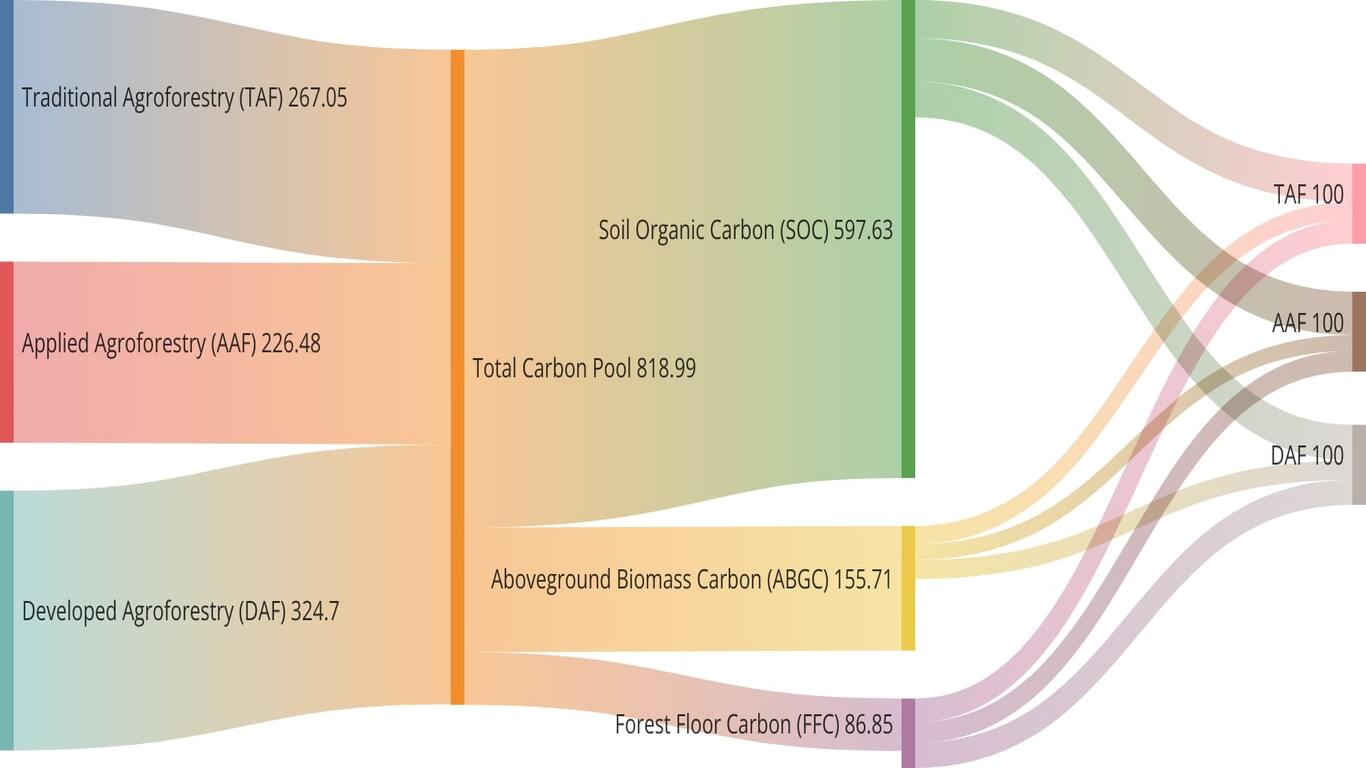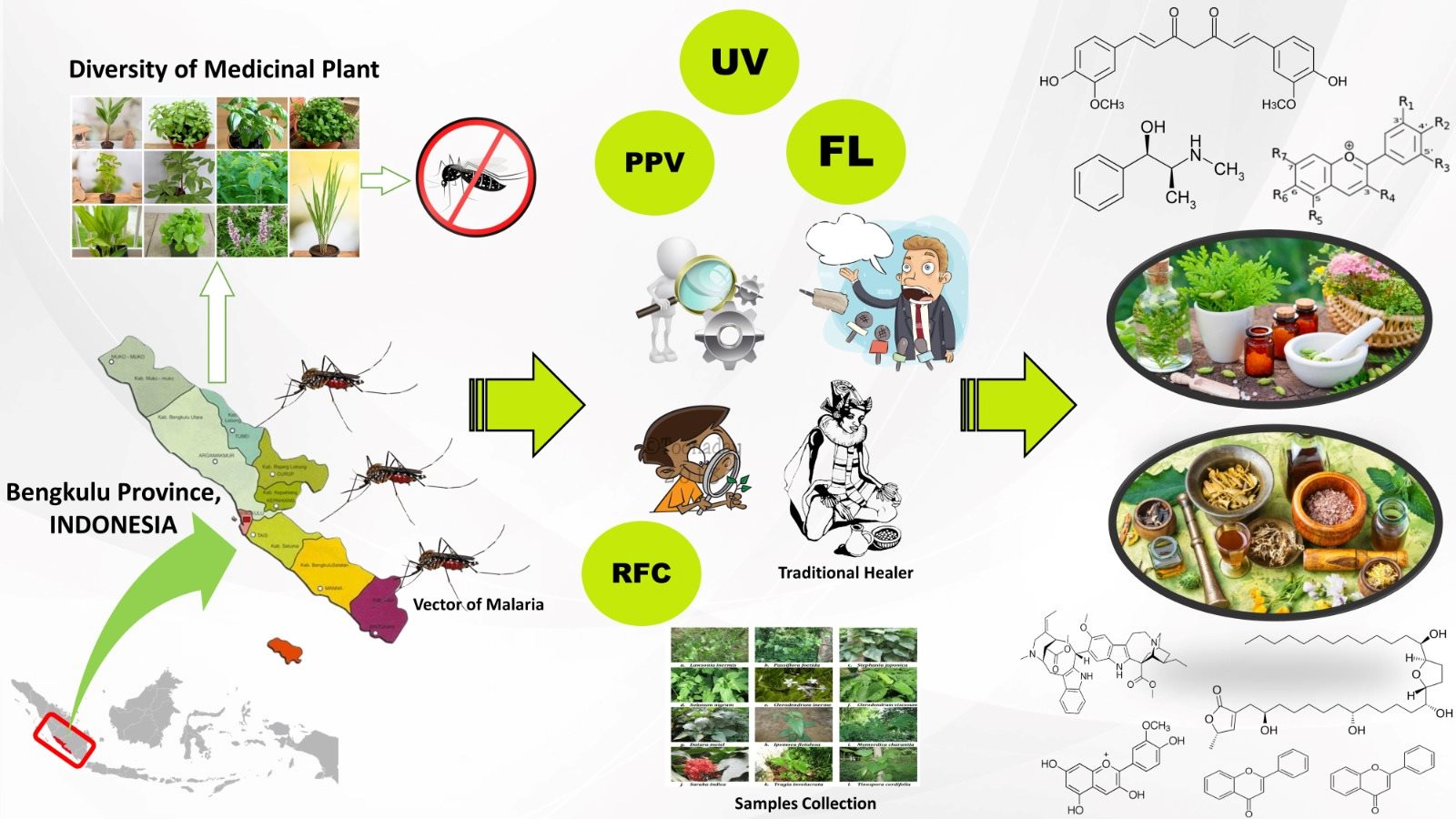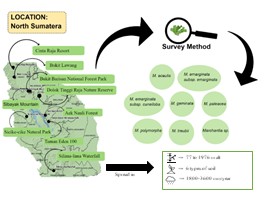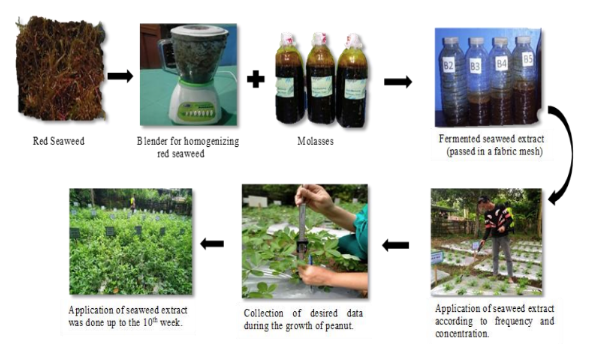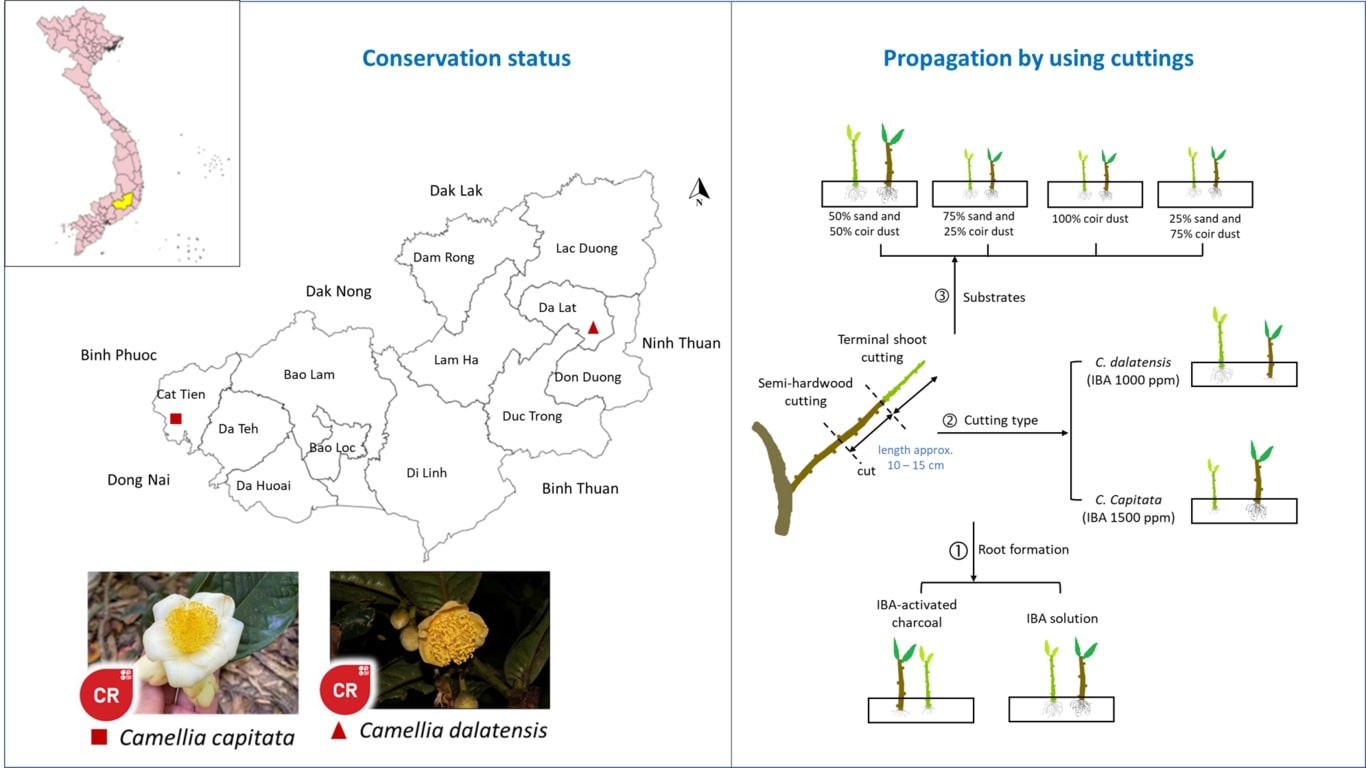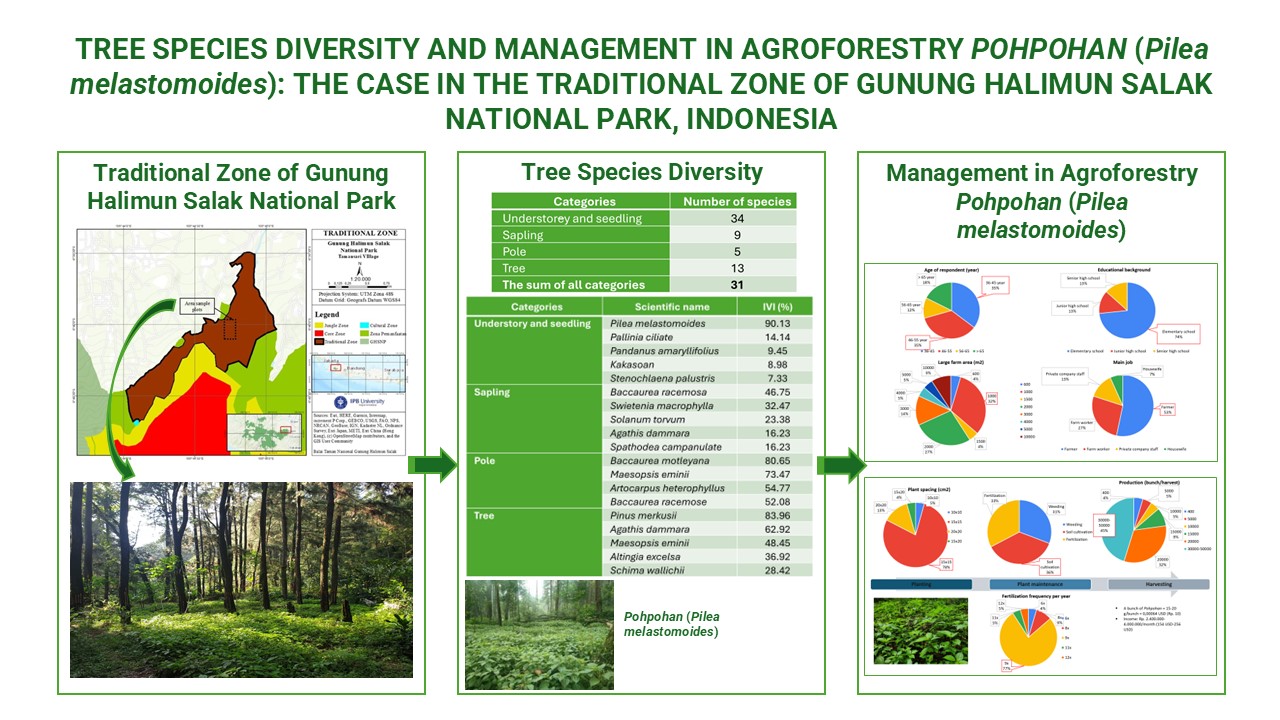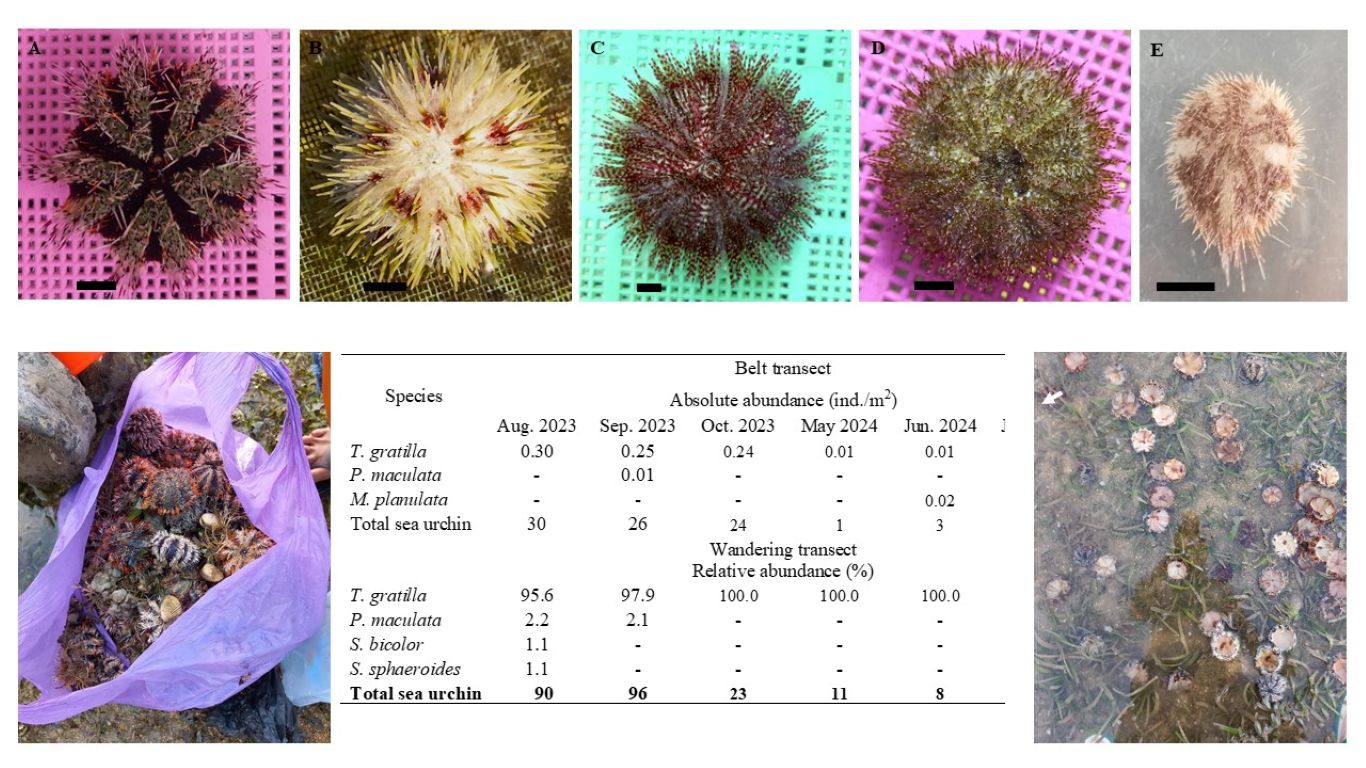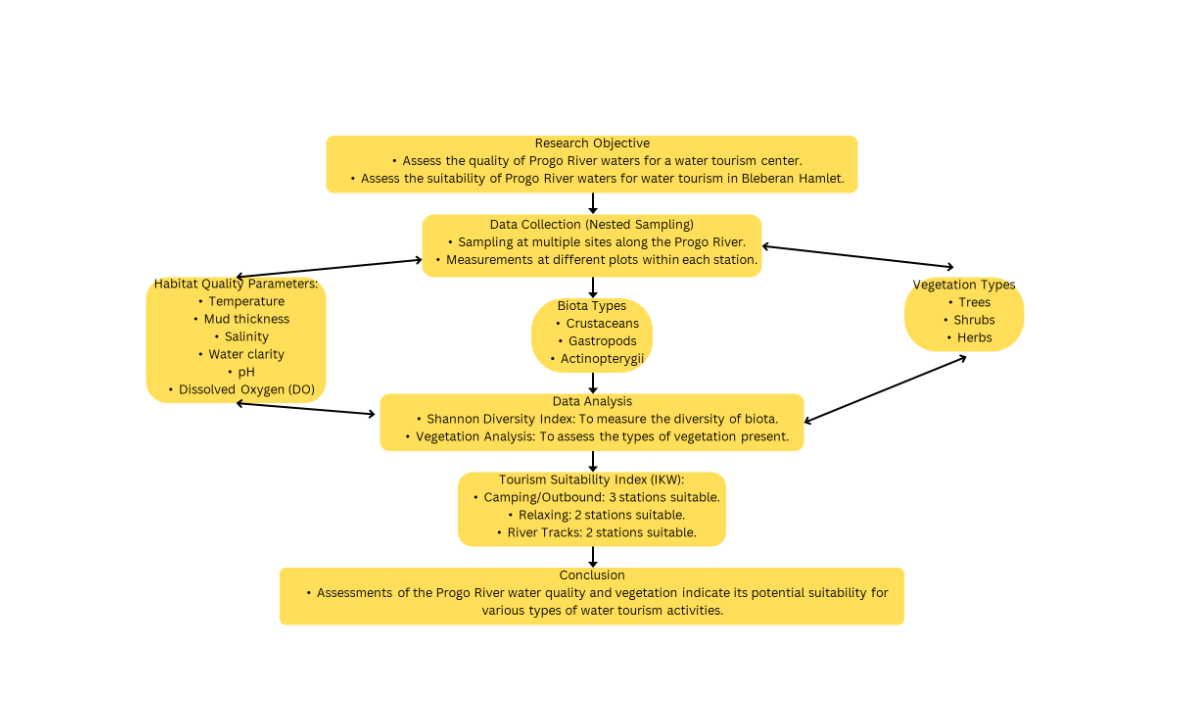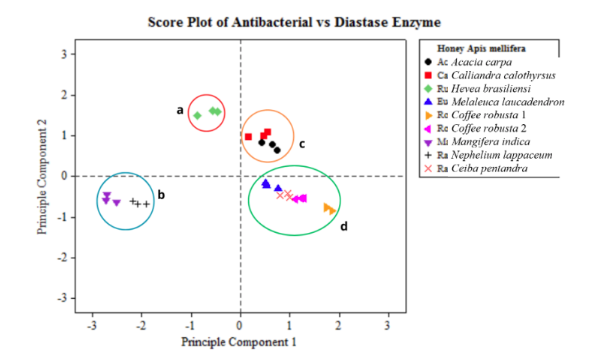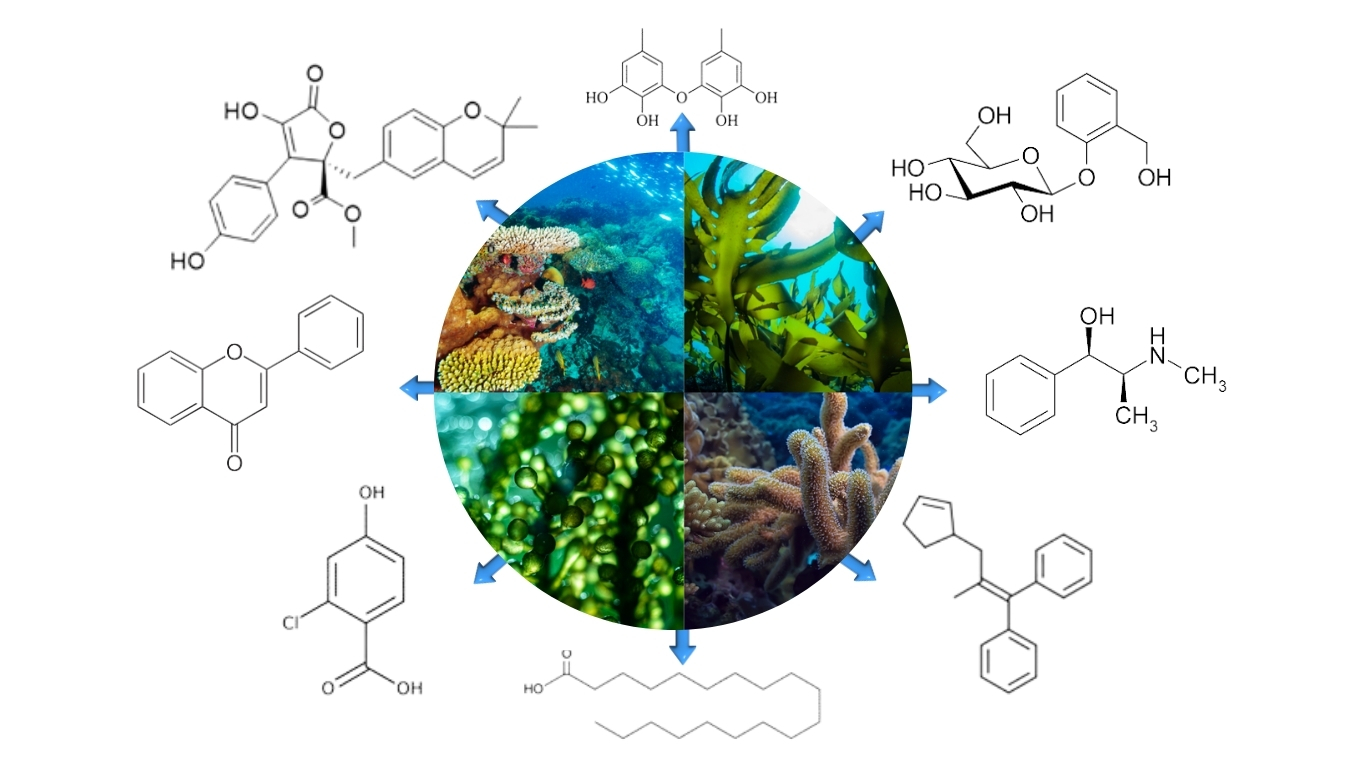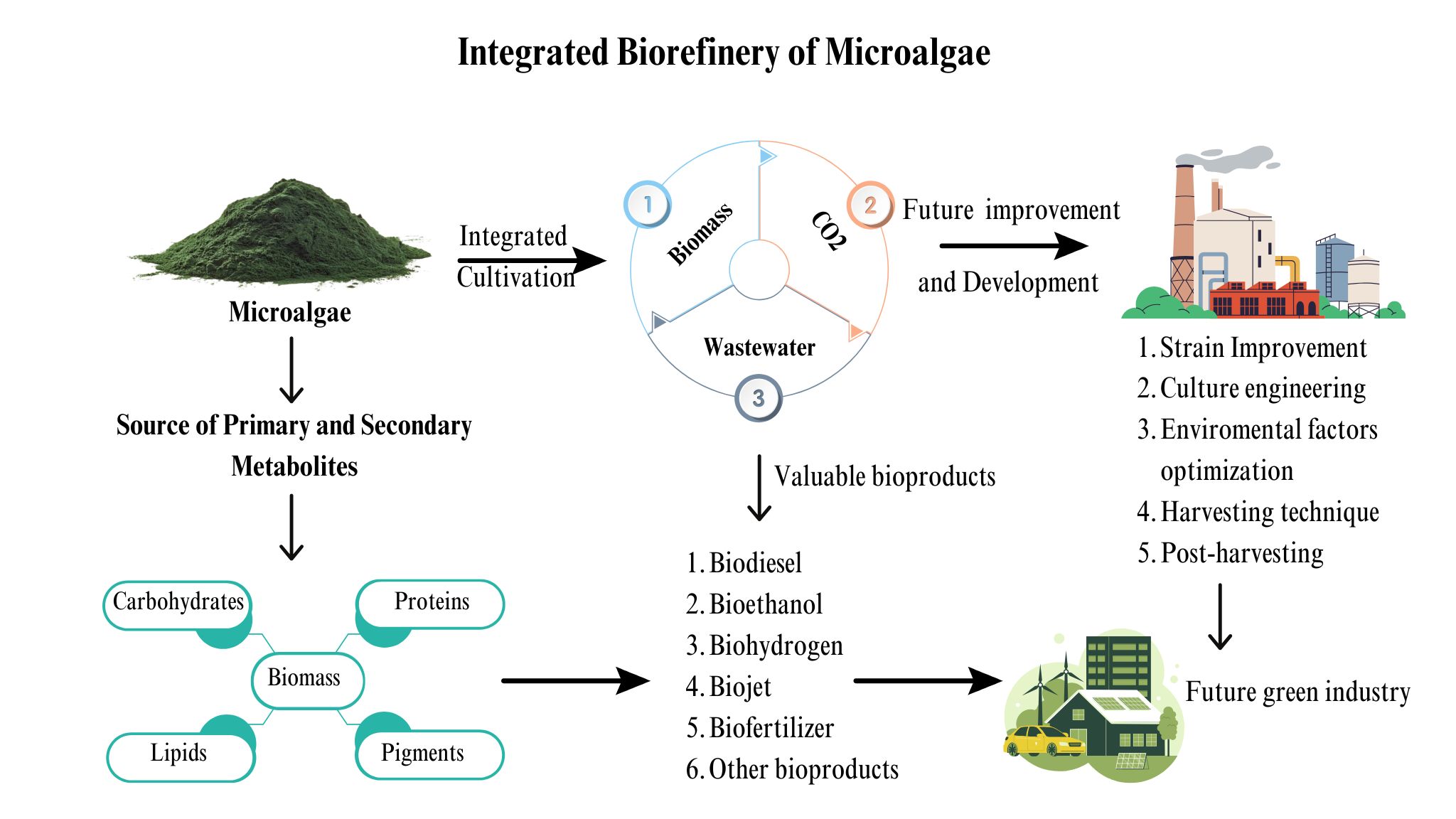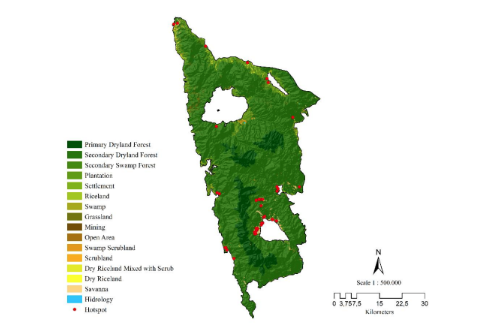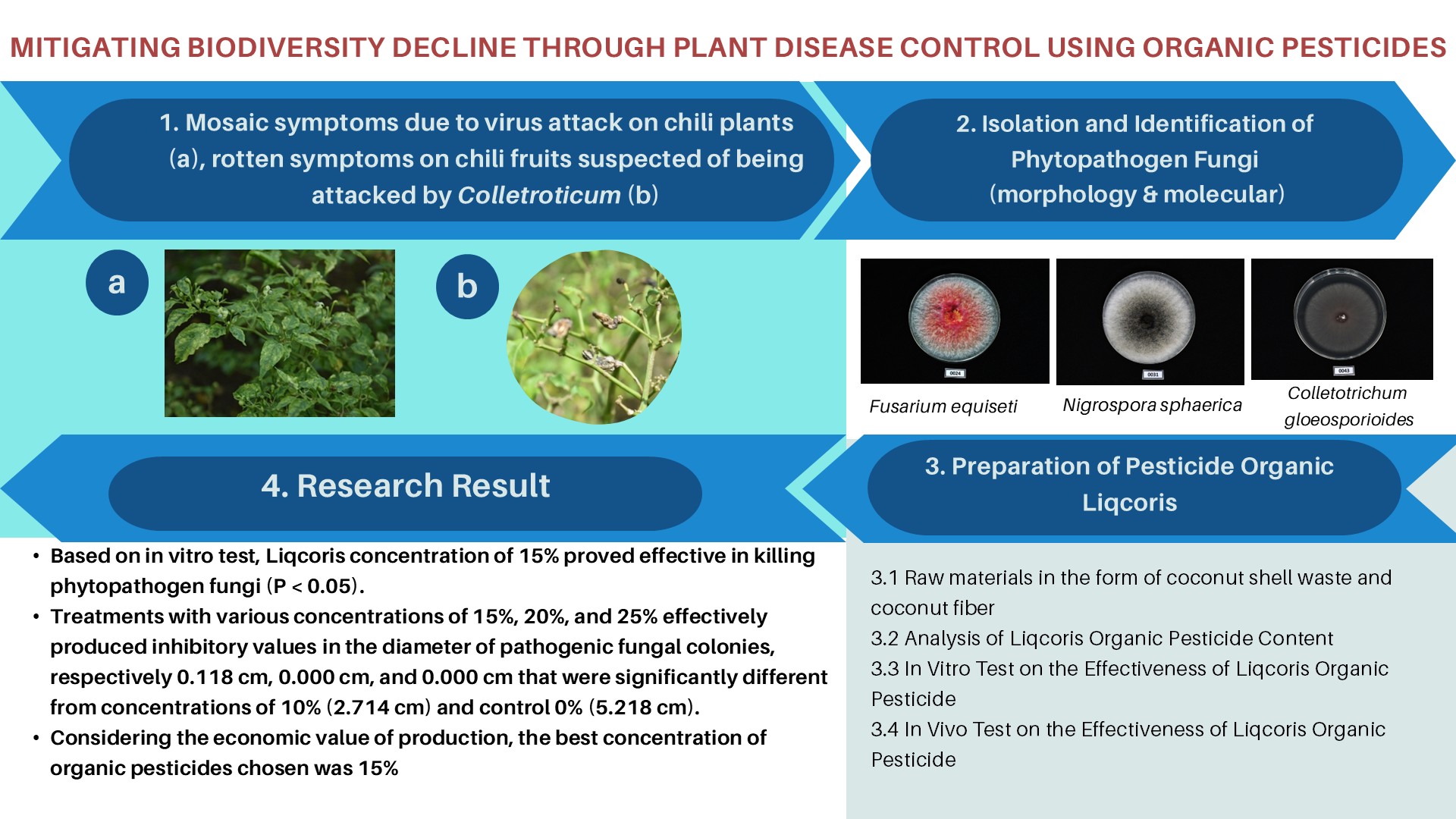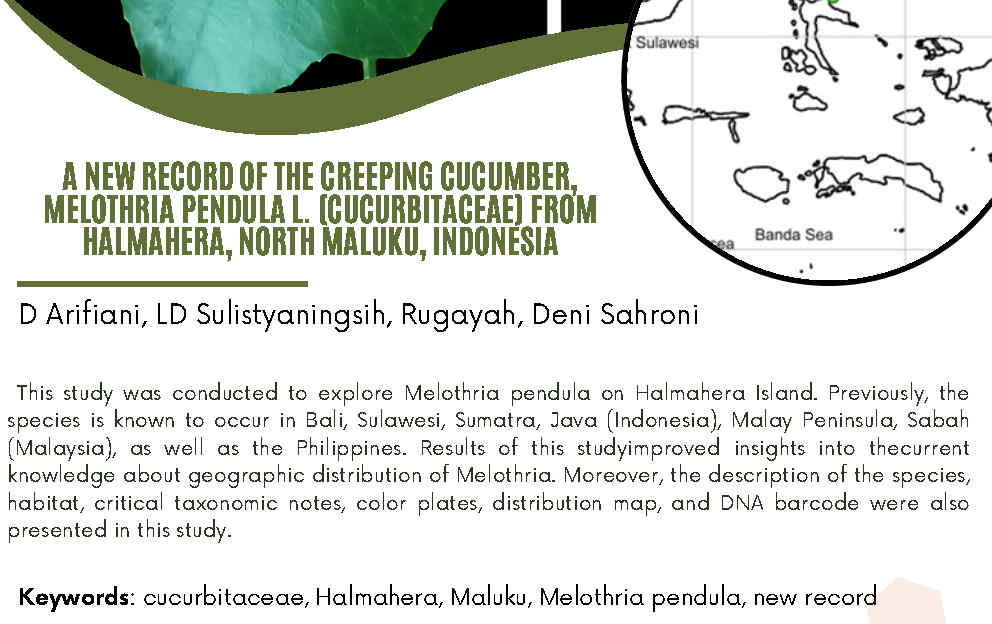OPTIMIZATION OF Talinum paniculatum Gaertn. ROOT INDUCTION AND THE EFFECT OF PHOSPHATE CONCENTRATIONS AND AMMONIUM:NITRATE RATIO ON BIOMASS OF ADVENTITIOUS ROOTS IN IN VITRO CULTURE
Java ginseng (Talinum paniculatum Gaertn.) is a medicinal plant, the roots of which are commonly used in traditional medicine. In its natural habitat, the roots grow very slowly, requiring two to three years to produce 100 g of roots per plant. Plant tissue culture could therefore provide an alternative means of accelerating root growth. This research aimed to optimize root induction and determine the effect of phosphate (KH2PO4) concentration and the ratio between ammonium and nitrate (ammonium:nitrate) on the biomass of Java ginseng adventitious roots in in vitro culture. Stem and leaf were used as explants and various combinations and concentrations of IBA and BAP, kinetin, and TDZ were used as growth regulators. Leaf explants were grown in Murashige and Skoog (MS) media supplemented with IBA 2 mg/L and various concentrations of phosphate (170; 212.5; 255; 297.5; 340; 382.5; 425; 467.5; 510 mg/L) and various ammonium:nitrate ratios (21:19 mM as the control, 0:30 mM, 10:20 mM, 15:15 mM, 20:10 mM, 30:0 mM). Cultures were maintained for 6 weeks. The observed parameters were fresh weight, dry weight, the duration of root formation, and the number and length of adventitious roots. The data were analyzed using Analysis of Variance. The results showed that the concentration of phosphate and the ammonium:nitrate ratio significantly influenced the amount, length, fresh weight, and dry weight of Java ginseng adventitious root. The highest fresh weight (37.47 mg) and dry weight (5.53 mg) were achieved in the treatment of double phosphate concentration (KH2PO4 340 mg/L), while an ammonium:nitrate ratio of 10:20 mM was the optimum treatment to produce the highest biomass (fresh weight 73.6 mg and dry weight 8.2 mg).
Downloads
Baque MA, Hahn EJ, Paek KY. 2010. Induction of adventitious root from leaf explants of Morinda citrifolia affected by auxin and light quality. In Vitro Cell Dev Biol Plant 46: 71-80.
Barker AV, Pilbeam DJ. 2007. Handbook of plant nutrition. Boca Raton: CRC Press, Taylor & Francis. p. 52.
Buddh S. 2014. Comparative study of rock phosphate and calcium phosphate on the growth & biochemistry of Brassica juncea and it’s impact on soil health. Journal of Environmental Science, Toxicology and Food Technology 8: 22-39.
Curtis WR, Paul MH, Alden HE. 1991. Modeling linear and variable growth in phosphate limited suspension cultures of opium poppy. Biotechnology and Bioengineering 38: 371-79.
Dormatey R, Sun C, Ali K, Qin T, Xu D, Bi Z, Bai J. 2021. Influence of phosphite supply in the MS medium on root morphological characteristics, fresh biomass and enzymatic behavior in five genotypes of potato (Solanum tuberosum L.). Horticulturae 7: 265.
Erin NN, Junairiah, Manuhara YSWM. 2020. The effect of IBA and Ethephon on growth and saponin content of Talinum paniculatum Gaertn. adventitious Root In vitro. Eco. Env. & Cons. 26 (June Suppl. Issue): pp. (S9-S13).
George EF, Michael AH, De Klerk GJ (editors). 2007. Plant propagation by tissue culture volume 1. The background. Dordrecht (Netherlands): Springer.
Guol B, Abasi BH, Zeb A, Xu LL, Weil YH. 2011. Thidiazuron: A multidimensional plant growth regulator. African Journal of Biotechnology 10(45): 8984-9000.
Isda MN, Fatonah S. 2014. Induksi Akar pada Eksplan Tunas Anggrek Grammatophyllum scriptum secara In Vitro pada Media MS dengan Penambahan NAA dan BAP [Root induction of Grammatophyllum scriptum from shoot explant in vitro culture in MS medium supplemented with NAA and BAP]. Jurnal Biologi Al-kauniyah 7(2).
Khristyana L, Endang A, Marsusi. 2005. Pertumbuhan, Kadar Saponin, dan Nitrogen Jaringan Tanaman Daun Sendok (Plantago major L.) pada pemberian Asam Giberelat (GA3) [Growth, saponin level and nitrogen content of Plantago major leaf tissue in gibberellic acid (GA3) treatment]. Biofarmasi 3(1): 11-15.
Kim JH, Chang EJ, Hoon-II O. 2005. Saponin production in submerged adventitious root culture of Panax ginseng as affected by culture condition and elicitors. Asia Pacific Journal of Molecular Biology and Biotechnology 13(2): 87-91.
Kirkby EA, Mengel K. 1987. Principles of plant nutrition 4th edition. Switzerland: International Potash Institute.
Komatsu M. 1982. Studies on the constituents of Talinum paniculatum Gaertner. Zasshi Yagukaku 5: 499-502.
Lawlor DW, Lemaire G, Gastal F. 2001. Nitrogen, plant growth and crop yield. In: Lea PJ, Gaudry JF, editors. Plant Nitrogen. Berlin, Heidelberg: Springer-Verlag.
Mahadi I, Wulandari S, Trisnawati D. 2013. Pengaruh Pemberian NAA dan Kinetin terhadap Pertumbuhan Eksplan Buah Naga (Hylocereus costaricensis) Melalui Teknik Kultur Jaringan secara in vitro [The effect of NAA dan kinetin on growth of Hylocereus costaricensis in vitro culture technique]. Jurnal Biogenesis 9(2): 14-20.
Manuhara YSW. 2014. Capita selecta plant tissue culture. Surabaya: Airlangga University Press.
Manuhara YSW, Kristanti AN, Utami ESW, Arif Y. 2015. Effect of sucrose and potassium nitrate on biomass and saponin content of Talinum paniculatum Gaertn. hairy root in balloon-type bubble bioreactor. Asian Pacific Journal of Tropical Biomedicine 5(12): 1027-32.
Murashige T, Folke S. 1962. Revised medium for rapid growth and bio assays with tobacco tissue cultures. Physiologia Plantarum 15: 473-97.
Oláh R, Szegedi E, Ruthner S, Korbuly J. 2003. Thidiazuron-induced regeneration and genetic transformation of grapevine root stock varieties. Vitis 42(3): 133-36.
Palestine, A.S, 2008, Induksi Akar Pada Biakan Tanaman Pule Pandak (Rauvolfia serpentine L.) Secara Kultur Jaringan [Root induction of Rauvolfia serpentine L. in vitro culture], thesis, Faculty of Agriculture, Malang
Panda AK, Mishra S, Bisaria VS. 1992. Alkaloid production by plant cell suspension cultures of Holarrhena antidysenterica effect of major nutrients. Biotechnology Bioengineering 39: 1043-51.
Pavlov A, Ilieva M, Ivan NM. 2000, Nutrient medium optimization for rosmarinic acid production by Lavandula vera MM cell suspension. Biotechnol Prog.16: 668-70.
Preece JE. 1995. Can nutrient salts partially substitute for plant regulators?. Plant Tissue Culture and Biotechnology 1(1): 26-27.
Taiz L, Zeiger E. 2003. Plant physiology 3rd ed. Sunderland: Sinauer Associates.
Solim MH, Kristanti AN, Manuhara YSW. 2017. Influence of Explant Position on Growth of Talinum paniculatum Gaertn. Adventitious Root in Solid Medium and Enhance Production Biomass in Balloon Type Bubble Bioreactor. IOP Conf. Series: Earth and Environmental Science 58 (01203)
Wahidah S. 2011. Pengaruh Hormon Kinetin Terhadap Pertumbuhan KalusRumput Laut Kappaphycus alvarezii Melalui Kultur In Vitro [The effect of kinetin on callus growth of Kappaphycus alvarezii in vitro culture]. Jurnal Vokasi. Rev. 7(2): 192-97.
Wattimena GA. 1988. Zat Pengatur Tumbuh Tanaman. Bogor: LaboratoriumKultur Jaringan Bioteknologi IPB [Plant Growth Regulators. Bogor: Plant Tissue Culture Biotechnology. Institute of Agriculture Bogor].
Widiyani T. 2006. Efek antifertilitas ekstrak akar som Jawa (Talinum paniculatumGaertn.) pada mencit (Mus musculus L.) jantan [The effect of antifertility of Talinum paniculatum Gaertn. root extract in male mice (Mus musculus L.)]. Bul. Penel. Kesehatan 34(3): 119-28.
Wiedenhoeft AC. 2006. The green world plant nutrition. New York: Infobase Publishing.
Yin S, Liang Y, Gao W, Wang J, Jing S, Zhang Y, Li H. 2013. Influence of medium salt strength and nitrogen source on biomass and metabolite accumulation in adventitious root cultures of Pseudostellariaheterophylla. Acta Physiologiae Plantarum 35(8): 2623-28.
Zhang YH, Gao WY, Wang J, Li XL, Xiao PG. 2011. Improvement of growth and periplocin yield of Periploca sepium adventitious root cultures by altering nitrogen sources supply. Chin Herb Med. 3: 226-31.
Copyright (c) 2023 Yosephine Sri Wulan Manuhara, Palupi Dasawulan Lestari, Syifa Fajrisani, Putri Gehasti; Sugiharto

This work is licensed under a Creative Commons Attribution-NonCommercial-NoDerivatives 4.0 International License.
Authors who publish with this journal agree with the following terms:
- Authors retain copyright and grant the journal right of first publication, with the work 1 year after publication simultaneously licensed under a Creative Commons attribution-noncommerical-noderivates 4.0 International License that allows others to share, copy and redistribute the work in any medium or format, but only where the use is for non-commercial purposes and an acknowledgement of the work's authorship and initial publication in this journal is mentioned.
- Authors are able to enter into separate, additional contractual arrangements for the non-exclusive distribution of the journal's published version of the work (e.g., post it to an institutional repository or publish it in a book), with an acknowledgement of its initial publication in this journal.
- Authors are permitted and encouraged to post their work online (e.g., in institutional repositories or on their website) prior to and during the submission process, as it can lead to productive exchanges, as well as earlier and greater citation of published work (See The Effect of Open Access).










